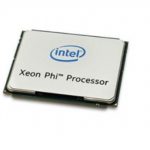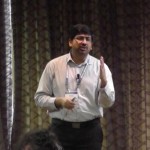Welcome to the 2020 OpenFabrics Workshop video gallery. The OpenFabrics Alliance (OFA) is focused on accelerating development of high performance fabrics. The annual OFA Workshop, held in virtual format this year, is a premier means of fostering collaboration among those who develop fabrics, deploy fabrics, and create applications that rely on fabrics. It is the […]
Search Results for: iit
Record Number of Student Teams to Participate in the APAC HPC and AI Competition
The HPC-AI Advisory Council (HPCAIAC) in collaboration with the National Supercomputing Centre (NSCC) Singapore today announced the teams competing in the co-organized, third annual APAC HPC-AI Competition supporting student development and mastery in high performance computing and AI disciplines. Comprised of undergraduate and graduate competitors from some of Asia Pacific’s leading academic institutions, 30 teams […]
New Paper Surveys Optimization Techniques for Intel Xeon Phi
A new paper by Dr Sparsh Mittal surveys techniques for evaluating and optimizing Intel’s Xeon Phi. Now accepted in Concurrency and Computation 2020, the survey reviews nearly 100 papers. “Intel Xeon Phi combines the parallel processing power of a many-core accelerator with the programming ease of CPUs. Phi has powered many supercomputers, e.g., in June 2018 list of Top500 supercomputers, 19 supercomputers used Phi as the main processing unit. This paper surveys works that study the architecture of Phi and use it as an accelerator for various applications. It critically examines the performance bottlenecks and optimization strategies for Phi. For example, the main motivation and justification for development of Phi was ease of programming.”
Video: Data Driven Ocean & Atmosphere Sciences at MoES in India
Dr. Suryachandra Rao from MoES gave this talk at the DDN User Group. “The Ministry of Earth Sciences (MoES) is mandated to provide services for weather, climate, ocean and coastal state, hydrology, seismology, and natural hazards; to explore and harness marine living and non-living resources in a sustainable way and to explore the three poles (Arctic, Antarctic and Himalayas). MoES recently inaugurated a new supercomputer at the Indian Institute of Tropical Meteorology (IITM) in Pune, dedicated to improving weather and climate forecasts across the country.”
New Paper Surveys Micron’s Automata Processor
“Micron’s automata processor (AP) exploits massively parallel in-memory processing capability of DRAM for executing NFAs and hence, it can provide orders of magnitude performance improvement compared to traditional architectures. This paper presents a survey of techniques that propose architectural optimizations to AP and use it for accelerating problems from various application domains such as bioinformatics, data-mining, network security, natural language, high-energy physics, etc.”
Video: Performance and Productivity in the Big Data Era
In this video from the Intel User Forum at SC18, Prabhat from NERSC presents: Performance and Productivity in the Big Data Era. “At the National Energy Research Scientific Computing Center, HPC and AI converge and advance with Intel technologies. Explore how technologies, trends, and performance optimizations are applied to applications such as CosmoFlow using TensorFlow to help us better understand the universe.”
Containers: Shifter and Singularity on Blue Waters
In this video from the Blue Waters 2018 Symposium, Maxim Belkin presents a tutorial on Containers: Shifter and Singularity on Blue Waters. “Container solutions are a great way to seamlessly execute code on a variety of platforms. Not only they are used to abstract away from the software stack of the underlying operating system, they also enable reproducible computational research. In this mini-tutorial, I will review the process of working with Shifter and Singularity on Blue Waters.”
New Paper: A Survey of Techniques for Dynamic Branch Prediction
Branch predictor (BP) is an essential component in modern processors since high BP accuracy can improve performance and reduce energy. However, reducing latency and storage overhead of BP while maintaining high accuracy presents significant challenges. Especially in light of Spectre attack, which arises due to speculative execution such as branch prediction, a relook on branch predictors is very important. In this paper, we present a survey of dynamic branch prediction techniques. We review two-level BPs, neural-BPs, hybrid BPs and techniques for improving BP accuracy and reducing implementation overheads.
A Survey of Techniques for Dynamic Branch Prediction
Branch predictor (BP) is an essential component in modern processors since high BP accuracy can improve performance and reduce energy. However, reducing latency and storage overhead of BP while maintaining high accuracy presents significant challenges. Especially in light of Spectre attack, which arises due to speculative execution such as branch prediction, a relook on branch predictors is very important. In this paper, we present a survey of dynamic branch prediction techniques. We review two-level BPs, neural-BPs, hybrid BPs and techniques for improving BP accuracy and reducing implementation overheads.
Ceph on the Brain: Storage and Data-Movement Supporting the Human Brain Project
Adrian Tate from Cray and Stig Telfer from StackHPC gave this talk at the 2018 Swiss HPC Conference. “This talk will describe how Cray, StackHPC and the HBP co-designed a next-generation storage system based on Ceph, exploiting complex memory hierarchies and enabling next-generation mixed workload execution. We will describe the challenges, show performance data and detail the ways that a similar storage setup may be used in HPC systems of the future.”











